|
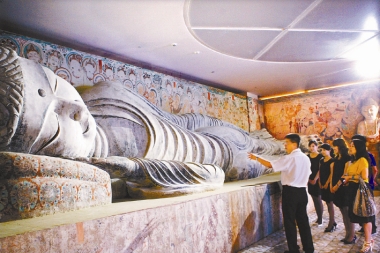
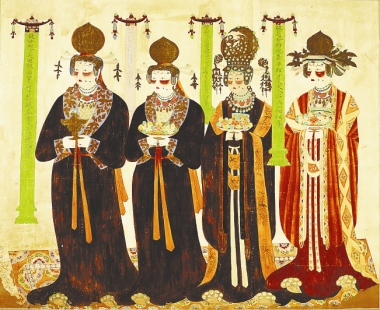
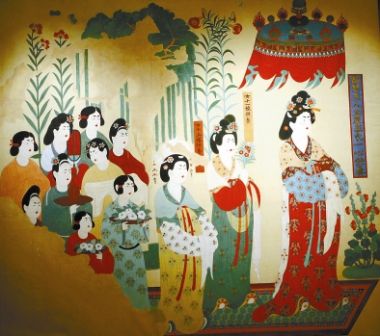
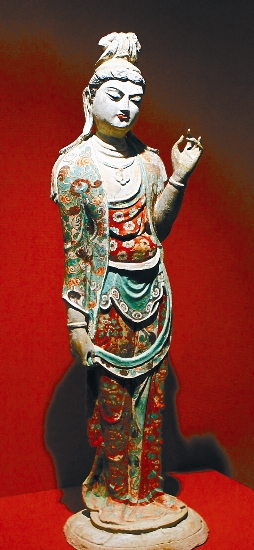
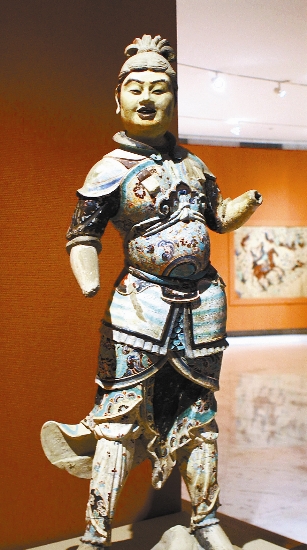
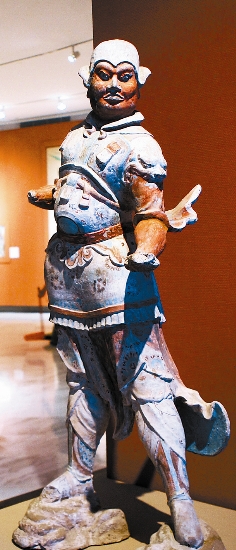
THE Guan Shanyue Art Museum reopened to visitors Wednesday after being closed for two weeks. Surprisingly, the interior of the elegant , modern museum has been transformed to look like the Mogao Caves located at the foot of Lianhua Hill.
Situated on the eastern slope of Rattling Sand Mountain in Dunhuang County, Gansu Province, the Mogao Grottoes (also known as Mogao Caves or Caves of Thousand Buddha) are among the three most noted grottoes in China along with the Longmen Grottoes and Yungang Grottoes. Mogao is also one of the largest, best preserved and richest treasure collections of Buddhist art in the world.
Construction began in the year 336, during the Eastern Jin Dynasty (317-420), and the endeavor continued until the Yuan Dynasty (1279-1368).
The free exhibition, through Oct. 9, is the biggest exhibition demonstrating Dunhuang art in Shenzhen. It reproduces statues and art works in three biggest caves of the Mogao Grottoes. All the items on display are reproductions at about 80 to 100 percent of their original sizes.
Among the attractions on display is a 13-meter Buddha statue. It is the most famous statue in Dunhuang, called Sleeping Buddha and is located in No. 158 Cave. The original length of the Buddha statue is 15.8 meters.
“There are two Buddha statues like this at Mogao. This one was made in the mid-Tang Dynasty. It is considered a classic combination of beauty, manliness and softness,” said Dr. Zhao Shengliang from the Dunhuang Academy.
The museum also reproduces two smaller caves, No. 29 Cave and No. 45 Cave, in the exact sizes of the original ones. Everything inside the caves is carefully reproduced. The No. 29 Cave was built in the Western Xia style and is well-preserved. Visitors can read writing on the walls. No. 45 Cave was constructed in the mid-Tang Dynasty with several smaller Buddha statues, which represent the highest level in statue-making of that period.
Meanwhile, the exhibition also displays many reproductions of items in other caves. The reproductions were copied from the original ones with the same colors and facial expressions.
Reproduction of the Mogao Grottoes is very popular among Chinese artists. The most famous example is painter Zhang Daqian. Zhang has been to Dunhuang several times to study and copy the statues and murals. As many colors had faded over time, he had tried to restore the murals.
“However, copies made by Zhang rely on his imagination, therefore have exaggerated some of the colors. But all the reproductions in this exhibition were restored exactly the same as the original ones after extensive historical research. The reproductions are not only of high artistic value but also have important value for historical and art study,” said Zhao.
Apart from the statues, visitors can also have the chance to see some murals that can seldom be seen even in the real grottoes.
“Many murals in the caves are now very difficult to see for common visitors as they have worn away as a result of insects and sunshine. But we have eight productions of these pictures, allowing visitors to see what these murals originally looked like,” said Zhao.
In 1987, UNESCO placed the Mogao Grottoes on the world cultural heritage list. Four hundred and ninety-two caves still stand today, containing some 2,100 colored statues and 45,000 square meters of murals.
The caves vary in size. The smallest one just allows a head’s space, while the largest one stretches from the foot to the top of the mountain, being over 40 meters high. The colored statues also differ in size, ranging from a few centimeters to 33 meters high, embodying the remarkable imagination of their makers.
Despite years of erosion, the murals are still brightly colored, with clear lines. Through pictures of different styles and schools drawn in different historical periods, they tell Buddhist stories as well as life in the secular world.
All these, plus a large quantity of Buddhist sutras and relics kept in the caves, have provided valuable materials for the study of ancient China’s politics, economy, culture and art, science and technology, military affairs, and religion, documenting national history as well as cultural exchanges between China and the rest of the world.
The exhibition was also on in Beijing in 2008 to celebrate the opening of the Beijing Olympics. It attracted more than 660,000 visitors around the world and extended its opening time for one more month.
(Wang Yuanyuan)
Dates: Through Oct. 9
Ticket: Free
Venue: Guan Shanyue Art Museum, 6026 Hongli Road, Futian District (福田区红荔路6026号关山月美术馆)
Buses: 10, 14, 25, 34, 105, 111, 215, 228, 238, 322, 350, 371
Metro: Children’s Palace Station (少年宫站), Exit B
|

